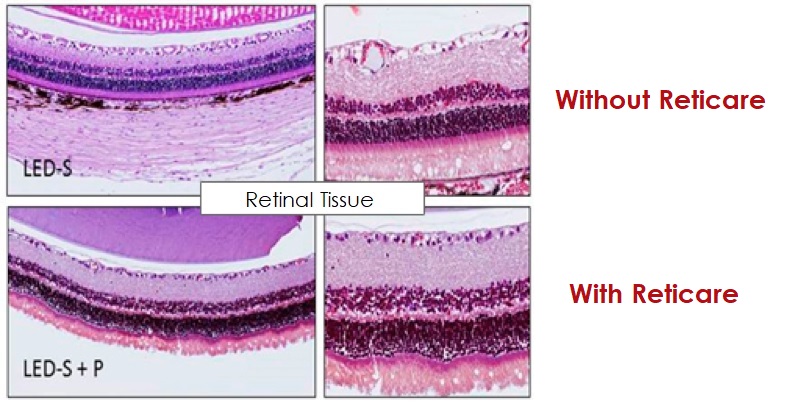Reticare stands alone as the world’s only blue light protection developed and validated by independent medical research over 20 years.
Below are the key scientific studies supporting Reticare’s effectiveness.
What is Blue Light & How Does It Impact Your Health?

Blue Light: The Invisible Threat
Blue light is a high-energy, short-wavelength light emitted by digital screens, LED lighting, and the sun.
Where does blue light come from? Most of our daily blue light exposure comes from smartphones, tablets, computer monitors, TVs, and LED lamps—devices we use every day, often for hours at a time.
Unlike other visible light, blue light penetrates deep into the eye and can damage sensitive retinal cells over time.
Scientific studies now link blue light to a higher risk of digital eye strain, sleep disruption, and potential long-term vision loss.
Proven by Science & Leading Universities
(irreversible)
with Reticare

(irreversible)
without Protection
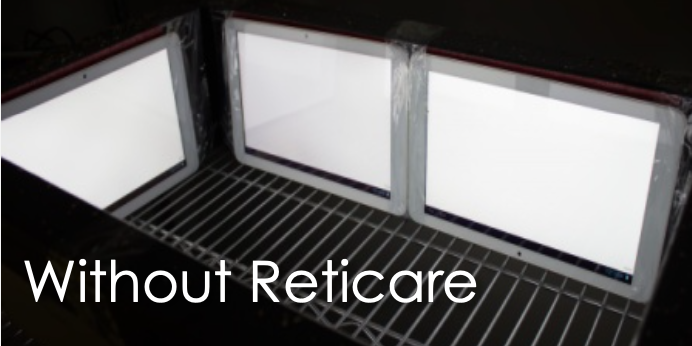
Scientific Research
With vs. Without Reticare

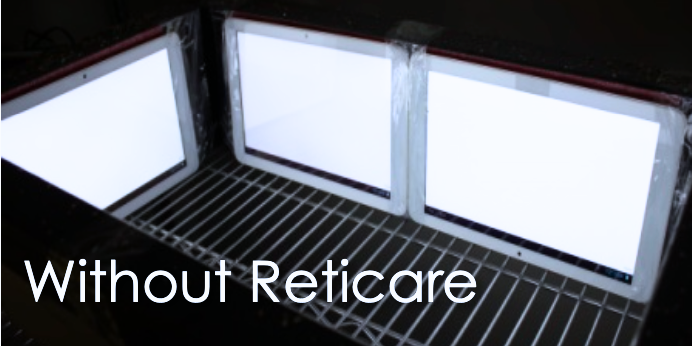
1 – Lab Animals - Rat Experiments 2002 – 2003
- 1-Year trial: High exposure to blue light without filter.
- Conclusion: The test results indicate that retinal damage was found when the retina is exposed to short wavelength light and photo-protection, at a radiation of 450
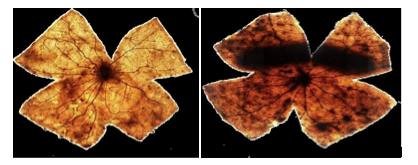

2 – Lab Animals - Rabbit Experiments 2003 – 2005
- 2-Year experiment, consisting of longitudinal and transverse studies: Experiment consisted of chronic exposure to short wavelength light in cycles of light/dark (12/12). Lab Rabbits were implanted with an IOL in one eye and the contra lateral eye was left without a filter.
- Conclusions: Pro-apoptotic gene activation in the unprotected retinas and activation of anti-apoptotic genes in the photo-protected retinas were observed.
3 – Human Clinical Trials 2006 – 2015
- 7-Years (longitudinal and transverse): Longitudinal study (conducted over a period of time) and cross-sectional study (comparing two eyes) operated from cataract; an intraocular lens was implanted in one eye with filter and contra lateral eye was left without filter. Average age, 77 years.
- Conclusions: A decrease in macular thickness was observed in eyes without protective filter, as well as a diminution of thickness caused by age. The study also indicates the eyes without photo-protection have higher prevalence to eye diseases. The macular eye thickness with the protective filter remains without change (it does not age).
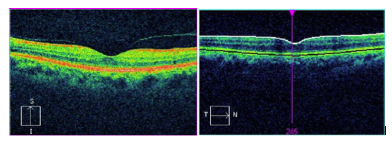
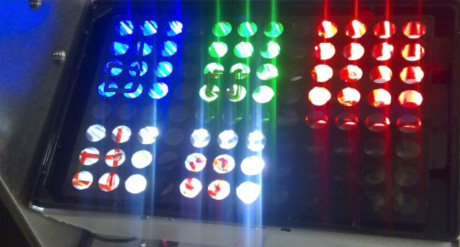
4 – LED Retinal damage In-Vitro Experiments
- Cells of the human retinal pigment epithelium exposed to light LED (monochrome white 5400ºK and 468 nm, 525 nm, 618 nm) to 7cm 36h apart on circadian cycle (12 light / 12 darkness), with and without protection.
- Conclusions: With No photo-protection, cell death is observed in more than 90%;With photo-protection cell survival rate is at approximately 83%.
5 – Tablet Retinal damage In-Vivo Experiments 2015-2016
-
One of the most important studies, presented on January 2017, changed everything: The effects of standard tablet screens tested on the retinas of lab animals, without any protection vs with Reticare Blue Light protective filters, showed extraordinary results.
Conclusions: The effects on the retina of lab rats: Tablet Exposure over 3 months, 16 hours/day/both groups – Group of lab rats exposed to screens without Reticare filters: 23% Cell death (irreversible) detected in the retinas -- Group of lab rats exposed to screens with Reticare filters: 0% Cell death detected in the retinas.


